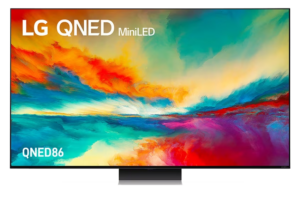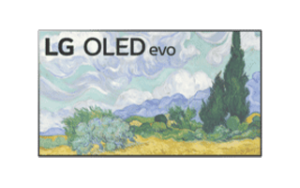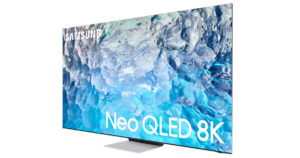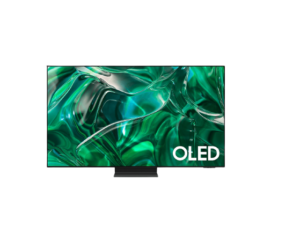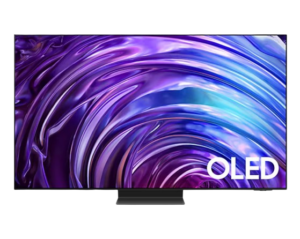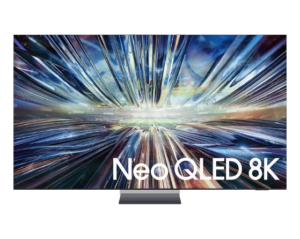Ignore the AI and just enjoy the show.
LG QNED86 MiniLED TV Review: Better without AI
We are smack bang in the middle of the “powered by AI” portion of consumer tech, and despite the word ‘intelligence’ in the name it isn’t always that smart. The AI features in the QNED86 MiniLED TV exemplify this. On paper they seem like excellent inclusions, but in practice they do little more than tick that ever more crucial ‘AI’ box. The QNED86 is an excellent television, but without the AI, it’s better.
How much does the QNED86 MiniLED cost in Australia?
The LG QNED86 MiniLED starts at $3,499 in Australia for the 65-inch variant. The price amps up by $1,000 to the 75-inch model, and another $1,500 again for the 85-inch.
Here's a complete breakdown of pricing for the QNED86 range in Australia.
QNED86 MiniLED: Connectivity and Features
Starting off at the core of the bubble, the QNED86’s is all about AI and aptly named the a7 AI Processor 4K Gen 6. This is the same processor featured in the LG OLED B3 (2023), and the Gen up from the LG OLED A2 (2022), and is said to automatically improve picture and sound quality based on what you’re watching. Since this is last year’s model we’ll probably see a more powerful processor coming up in 2024’s QNED models.
Some things, like the operating system are pretty consistent across LG’s range however. Sporting WebOS23, the user experience is straightforward, bringing you a range of popular streaming apps like Netflix, a bunch of the Plus-flavoured streamers, Twitch, Kayo and more without having to download them individually. A solid handful of these are even on the remote for quick access. You’ll also find a microphone button to use verbal commands on the remote but I’d advise against it. The voice recognition is awful, especially for an Australian accent, I found that speaking in an American accent helped a bit but it is easier to just use the buttons or the mobile remote through the LG app if you can.
On the TV itself there are four HDMI ports with varying capabilities. One port is made for gaming, supporting 120FPS, while one other supports eARC, the other two are your basic HDMI 2.1 ports.

QNED86 MiniLED: Picture Quality
The QNED86’s picture quality didn’t impress me out of the gate, but after fixing a few niggles it was worth the wait. Out of the box, LG suggests switching on AI Picture Pro which is designed to “remove noise, optimise content and saturation” and all around give you higher quality visuals. Sounds like the right call to make, but it was not.
With AI Picture Pro enabled the highlights were blowing out, details were hazy, and there was some weird blur happening around movement. All around the clarity was well under what you’d expect from a television at this price point, plus the latency was incredibly slow for gaming. Switching AI Picture Pro off significantly improved a lot of these problems, and some extra tweaking got me the rest of the way there. LG TVs have a slew of picture customisation options, so switching back to the Standard setting and playing with these resulted in the best picture. For the most part, the switch dealt with the visual problems seen in the AI setting - texture had greater detail, and the motion blur righted itself - all that was left was the highlight blowout which was easily fixed by dialling down the white balance in the advanced settings.
If you’re less keen on customising it yourself, there are a bunch of picture settings to pick from. Clarity and texture tend to stay the same across the modes but the warmth and colour balance of the image changes. These span from VIVID which looks a bit too much like an Instagram filter for me, but really amps up the contrast and saturation, through to CINEMA which has a slight sepia-tone to it, and pro settings for both dark and brightly-lit rooms. None of these are as true to colour as bespoke customisation though.
During testing the key stand out is the incredible detail. Amongst the vibrant neon lighting in Bladerunner, you can see the individual LEDs on the screens across the city. Textures in the dishes from The Menu pop off the screen, and in David Attenborough’s A Life on Our Planet you can clearly see individual hairs on animals’ hides. Even watching content upscaled to 4K like Sin City, there is still a good amount of detail albeit obviously not as much as with native 4K content. Once you’ve got the balance down, the 4K picture quality is truly stunning, and about as good as you can get with MiniLED technology.

MiniLED still uses backlighting technology so you can’t expect to get the same crisp blacks as you’d see with MicroLED or OLED displays. This can, and did mess with the contrast on the QNED86. The results are nothing to scoff at, but like with any backlit screen darker scenes can be harder to take in. In The Menu forest chase scene for example, the back and foreground blend and you can’t get a real sense of what is actually happening. It messes with skin tones too - one of the restaurant staff with a darker complexion unintentionally blended in with the trees. This isn’t exclusively an LG problem of course, it’s a technology limitation and a cost/benefit trade-off. MiniLED is a much more affordable option compared to OLED or MicroLED, and it has better blacks than other LED options.
It will take some tweaking to find the right balance on the QNED86, but it is well worth the effort. After refining the picture you’ll be rewarded with a crisp, beautiful display, but I'd wait until the sun goes down to watch anything shot in low light.
QNED86 MiniLED: Audio Quality
TV speakers tend to lack the dimension required for immersive, high quality audio but LG has attempted to combat this in the QNED86 to varying degrees of success. Similar to the picture setup, LG suggests using AI Sound Pro - a setting which is supposed to create the effect of surround sound speakers using the down firing ones on the device. While it does widen the soundstage, it does so to the detriment of other audio qualities.
The Standard audio setting on the QNED86 has an excellent treble register, average midtones, and subpar bass. During musical testing Carly Rae Jepsen’s I Didn’t Just Come Here to Dance and Child Gambino’s 3005 both lacked the deep resonance you’d usually hear through their bassline. The midtones sounded somewhat distant in both Feeling Good by Nina Simone, and While My Guitar Gently Weeps by The Beatles, while the high treble peaks in Portishead’s Humming are stunning with nary a hint of sibilance. With AI Sound Pro switched on all of these songs sound flatter, like they’ve been stretched across a wider stage and pushed further away from you.
Music isn’t your typical listening experience on a TV, it has a lot more aural nuance to it than a movie or a TV show. For your more usual viewing AI Sound Pro does a decent job throwing the sound around. Where an ultra wide soundstage can mellow out the highs and lows of a song, it can help mimic the directionality of surround sound speakers. Still though the AI functionality’s downsides were clear - dialogue would get lost, and the audio didn’t have defined pits and peaks.
Once again the Standard setting was the better option for clear, balanced audio. Other settings like CLEAR VOICE PRO or CINEMA, also allow you to amp up the dialogue without compromising on the rest of the sound balance like you’d need to on AI Sound Pro. All up the speakers on the QNED86 are fine, but they’re not what you’d want long term. You’re always going to be better off investing in a good soundbar rather than relying on AI to add dimension from your TV.
Stream for free tonight with these trials
Looking for something new to stream tonight? These services offer free trials so you won’t pay a cent unless you decide to keep subscribed once your trial’s up.
- Paramount+ 7-day free trial: Stream Dexter, Criminal Minds, Taskmaster and more
- Apple TV+ 7-day free trial: Stream Severance, CODA and more award-winning TV shows and movies
- Prime Video 30-day trial: Award-winning originals and shopping perks
- Foxtel Now 10-day trial: Wide range of live and on-demand content, including TV shows, movies and sports events
- Binge 7-day free trial: Foxtel's streaming service offering some of HBO's most popular series
Should you buy the QNED86 MiniLED TV?
LG’s QNED86 MiniLED television is an excellent piece of hardware, with an unnecessary focus on AI. While LG has joined much of the consumer tech industry by doubling down on Artificial (or Affectionate according to LG’s CES announcement) Intelligence, this television is better when you don’t take that into account.
Out of the box settings won’t do the TV justice, so if you’re after something with no labour involved this isn’t the right television for you. On the other hand, if you’re willing to take some time to customise the colour and the audio to suit your space, you’ll undoubtedly be blown away by the detail the display affords.


WhistleOut's limited-time deals on NBN 50 plans give you reliable download speeds and unlimited data at a price that won't break the bank.
Related Articles





